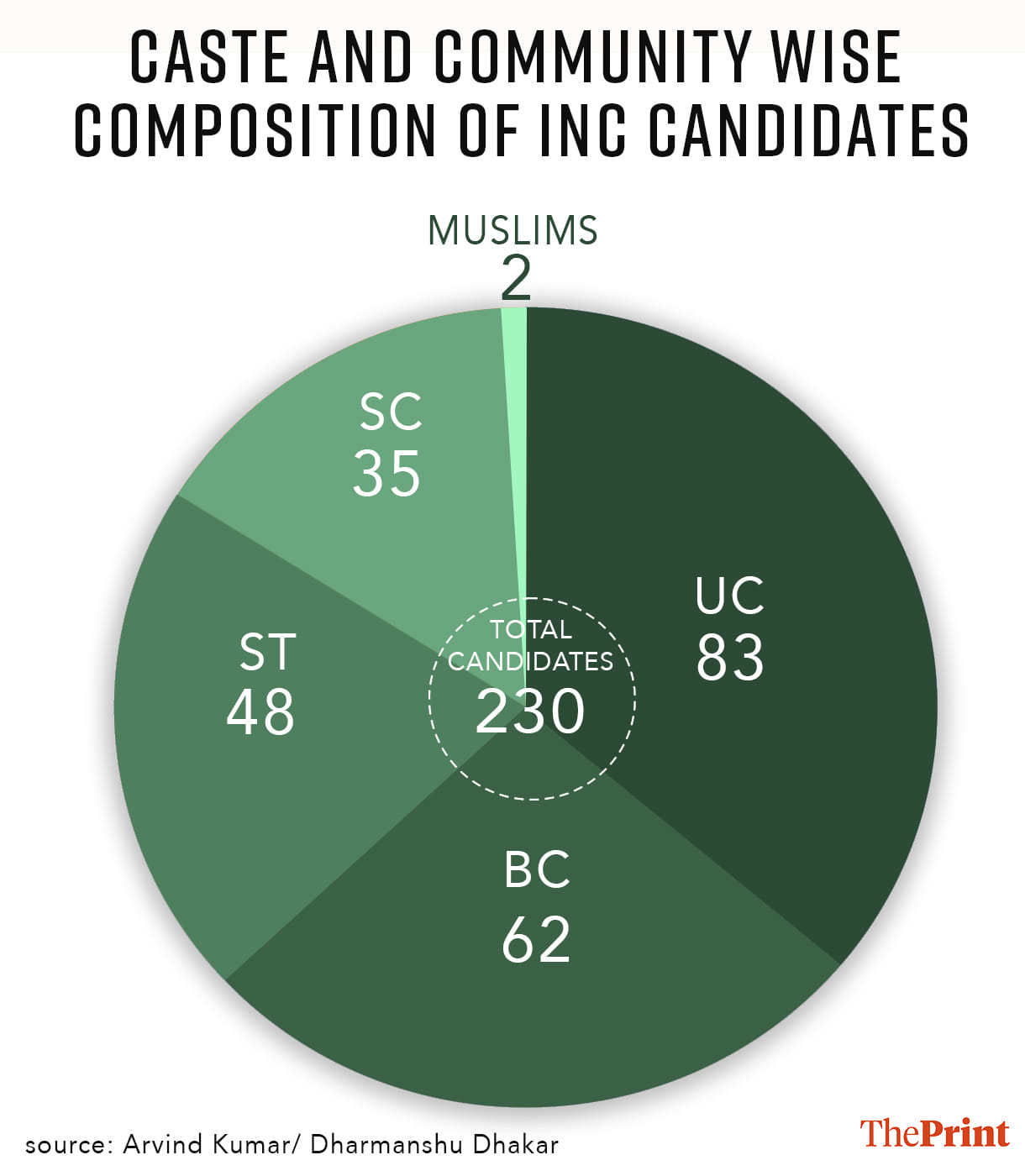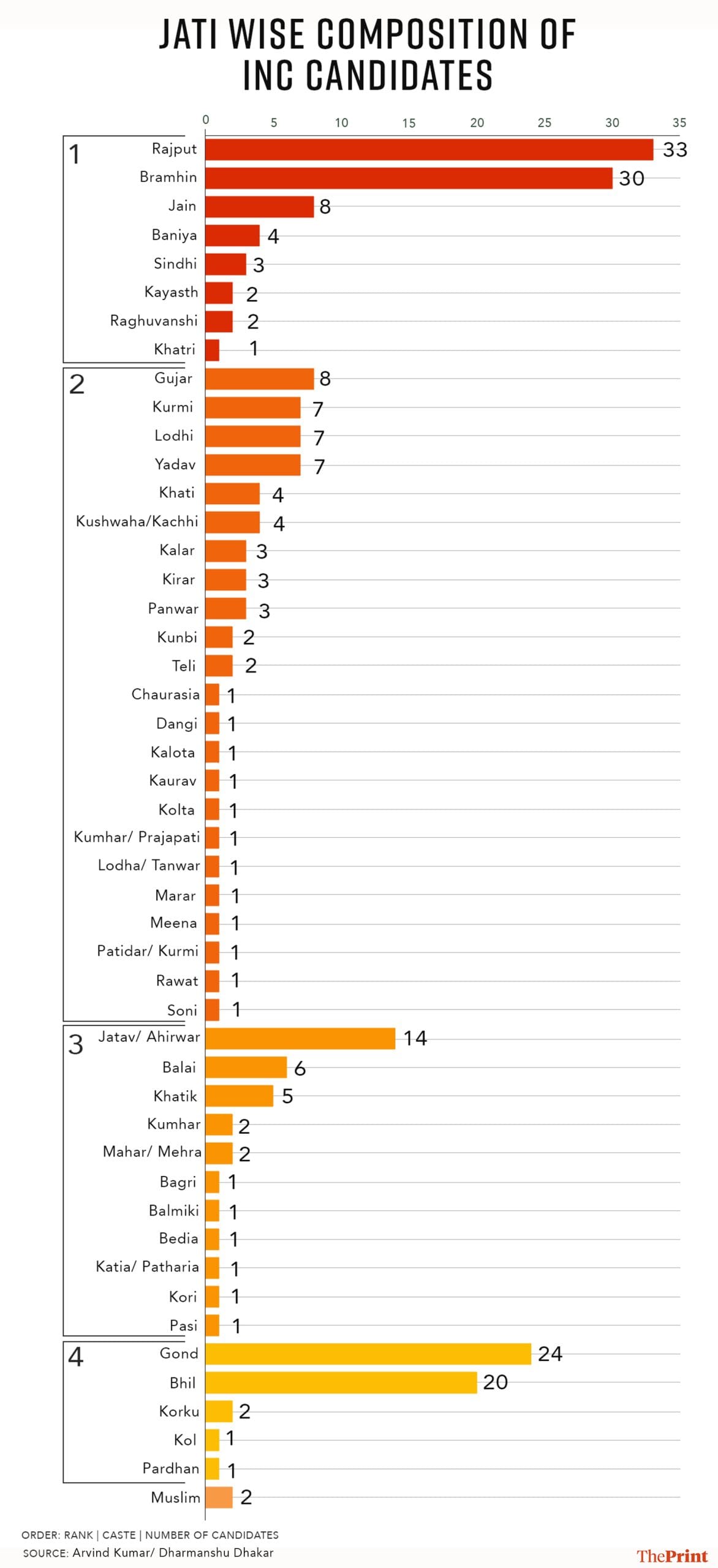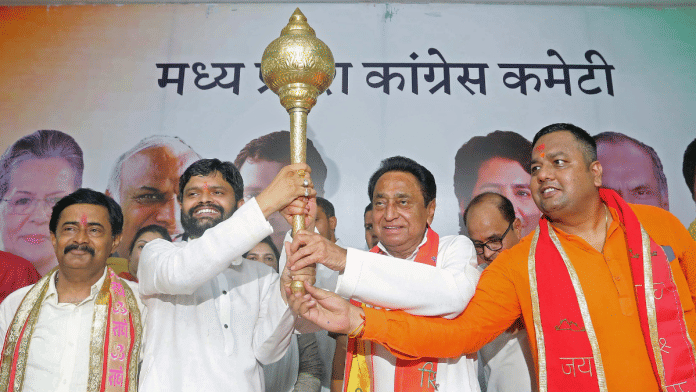The Congress has recently taken two visible turns at the front of social justice. First, the party appointed Mallikarjun Kharge, a veteran leader from the Dalit community as its national president. Second, Rahul Gandhi started using the slogan of ‘Jitnai Aabadi, Utana Haq’, the rights of a group are proportionate to its population share. Then the Congress started advocating for a caste census. It has already attempted to increase OBC reservation up to 27 per cent in a few states.
But is this shift reflected in the party’s list of nominated candidates for the upcoming Madhya Pradesh assembly election? Based on fieldwork data collected from interviews with district office bearers of the party, we present a detailed analysis of the caste and jati-wise composition of its candidates, similar to what we have done previously for BJP candidates. This article will enable us to understand whether the Congress has been able to change the caste composition of its candidates.
INC candidates and caste
Figure 1 provides a broader caste/category-wise nomination strategy of Congress candidates in the Madhya Pradesh assembly election. It reveals that of a total of 230 candidates, the party has nominated 36 per cent (83 tickets) from upper castes. For the purpose of this analysis, we have clubbed candidates from the Jain community with the upper castes.

The Congress has nominated 27 per cent of its candidates (62 tickets) from backward castes, 21 per cent (48 tickets) from Scheduled Castes, and 15 per cent (35 tickets) from Scheduled Tribes. Except for one, all SC and ST candidates have been nominated in the reserved constituencies. Surprisingly, the party has only given out two tickets to Muslims.
According to the data presented to the Madhya Pradesh High Court by the state government, OBCs make up 51 per cent of the state’s population. In that case, the upper castes comprise around 10 per cent of Madhya Pradesh’s population. Despite this, the party has allocated 36 per cent of tickets to the upper castes, while the OBCs, representing over half of the state’s population, have been given only 27 per cent of tickets (62 candidates)
This indicates that while the party has symbolically shifted towards social justice, it has not made substantive changes in its candidate nomination policy.
Jati-wise caste composition
Election studies are witnessing a growing demand for jati-level analysis. This is because some jatis wield disproportionate power among larger administrative caste categories, such as upper castes, OBCs, SCs, and STs.
Figure 2 reveals that more than half of the candidates (53 per cent) nominated by the Congress belong to five jatis—Rajput, Brahmin, Gond, Bhil and Jatav/Ahirwar. Rajput (33 tickets) and Brahmin (30 tickets) together get roughly around 27 per cent of the total number of tickets.

Sociologist Christophe Jaffrelot points out that the social base of the Congress in Madhya Pradesh was dominated by Rajputs and tribal communities in the 1990s. Rajputs seem to have kept their power intact, topping the tally with roughly around 14 per cent of total candidates whereas Brahmins rank second making up around13 per cent of the nominations.
Gonds and Bhils are next in line for significant political representation, with 24 and 20 tickets, respectively. Only five tribes are nominated by the Congress, with Gonds and Bhils receiving about 90 per cent of tickets among STs. Moreover, eight Jains, four Baniyas, and eight Gurjars candidates have been issued tickets. Gurjars do not constitute the largest jati among OBCs, but the party is keen to win them over. That’s because the community is believed to be displeased with the BJP due to police action against people of their caste in Gwalior.
Also read: BJP goes easy over age, turns to warhorses to retain power in MP
Meanwhile, the Yadavs, Kurmis and Lodhis have each been given the same number of tickets (7 tickets). Similarly, Kushwahas, Kachhis and Khatis have all received four tickets each. Overall, the Congress draws its candidates from 23 jatis of OBCs, with 12 of them being given one ticket each.
Within Scheduled Castes, the party has nominated the highest number of candidates from the Jatav/Ahirwar castes (14 tickets). Balais and Khatiks were given six and five tickets, respectively, securing the second and third among SCs. Out of 11 jatis among SCs nominated by the party, six of them were only given one ticket each.
The Congress has been unable to implement its aggressive stance on caste issues within the party. The traditional upper-caste local elite of the party still have their say in nominations, and at this juncture, the party cannot lose them. This might cost the Congress electorally.
Dharmanshu Dhakar (@dddharmanshu), PhD Scholar at Jiwaji University, Madhya Pradesh. Arvind Kumar (@arvind_kumar__), Assistant Professor at Royal Holloway, University of London. Views are personal.
(Edited by Ratan Priya)






